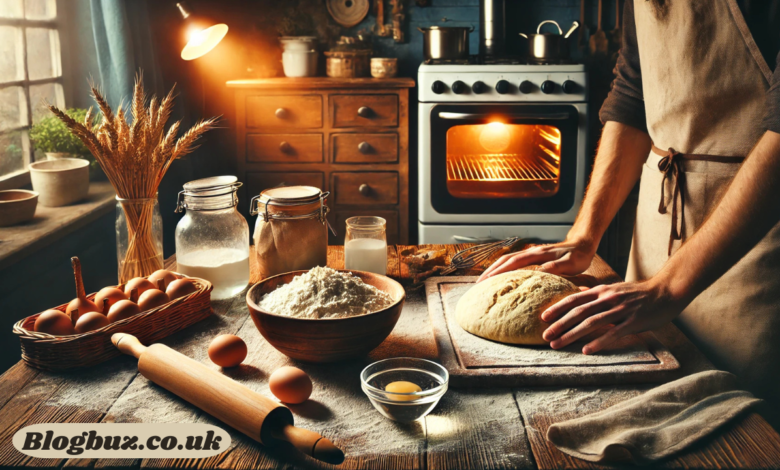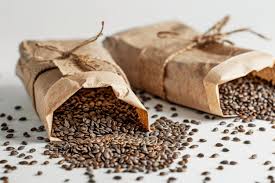https://me-encantas.com/2021/05/18/5-consejos-para-hacer-el-mejor-pan

Bread-making is a timeless craft that combines patience, technique, and high-quality ingredients. Understanding the fundamentals can elevate your bread-making game, whether you’re an experienced baker or a beginner. Based on helpful tips from trusted sources like Me Encinitas, this comprehensive guide dives deeper into the process, offering valuable insights and techniques for achieving the perfect homemade loaf.
Use Ingredients at Room Temperature
One of the most overlooked aspects of bread-making is the temperature of the ingredients. When ingredients like flour, yeast, and water are at room temperature, they blend more efficiently, allowing the yeast to activate more effectively. Cold ingredients can slow the yeast’s activity, affecting the dough’s rise.
- Why is room temperature critical? When added to warm or room-temperature ingredients, yeast activates more quickly, causing the dough to rise efficiently. If the ingredients are too cold, yeast activity is stunted, and you may have dense bread.
- Pro Tip: Set ingredients such as butter and eggs out about 30 minutes before baking to allow them to come to room temperature.
Master the Art of Kneading
One essential step that aids in developing the gluten structure in the dough is giving bread its chewy texture. If you knead too little, your bread could turn out flat or overly dense, while over-kneading can cause the bread to become too harsh.
- How to knead properly: Kneading involves pushing the dough away from you with the heel of your hand and folding it back over. This motion should be repeated for 10-15 minutes until the dough is elastic, smooth, and tacky to the touch.
- Pro Tip: Avoid adding too much flour while kneading. The dough may be sticky at first, but adding excess flour can dry out the dough, impacting the final texture of the bread.
Give the Dough Time to Rest
Resting is as essential as kneading in bread-making. After kneading, letting the dough rest allows the gluten network to relax and strengthen the dough, resulting in a better rise and fluffier bread.
- Resting phase: Once you’ve kneaded the dough, place it in a greased bowl, cover it using a moist towel, and then put it in a warm spot. The dough should ideally double in size before shaping it for the final rise.
- Pro Tip: The resting time can vary depending on your environment. The dough will take longer to rise in colder spaces, while warmer spaces speed up the process. Aim for a spot with a temperature for best results; keep the temperature between 75°F and 85°F.
Preheat the Oven and Use Steam
Preheating the oven is a must. Bread must go into a hot oven to get the best oven spring—the initial rapid rise when bread is placed in the oven. Preheating ensures that your dough cooks evenly and thoroughly, giving it that classic golden-brown crust.
- Why steam matters: Steam during the first few minutes of baking helps create a crispier crust by keeping the outer surface of the dough moist. You can generate steam by placing a shallow pan of water at the bottom of the oven or by misting the dough with water right before closing the oven door.
- Pro Tip: Avoid opening the oven too soon, as this can let out steam and cause the dough to collapse. Wait until at least halfway through the baking time before peeking inside.
Pay Attention to Ingredient Quality
While techniques are essential, the quality of your ingredients plays an equally crucial role in bread-making. High-quality flour, fresh yeast, and good water will significantly enhance the flavour and consistency of your bread.
- Choosing the suitable flour: The type of flour you use will determine the structure of your bread. For instance, bread flour has a higher gluten content than all-purpose flour, resulting in a chewier and stronger loaf.
- Fresh yeast matters: Fresh or high-quality active dry yeast is essential for a good rise. Expired or low-quality yeast will fail to rise, producing dense and unappealing bread.
- Pro Tip: Avoid overly chlorinated tap water, as chlorine can inhibit yeast activity. When in doubt, choose filtered or bottled water for the best results.
Timing is Everything: The Importance of Slow Fermentation
While speeding up the bread-making process may be tempting, patience is vital. A slower fermentation process (letting the dough rise for a longer time) allows for a deeper, more complex flavour to develop. When yeast has more time to break down the starches in the flour, the result is a rich, flavorful loaf with a well-structured crumb.
- Slowing down fermentation: You can achieve this by placing the dough in the refrigerator for a cold, slow rise. This method not only enhances flavour but also allows more control over the final texture of your bread.
- Pro Tip: If you plan to let your dough ferment overnight, cover it tightly to prevent it from drying out.
Understanding Hydration: How Water Impacts Dough
The water content in your dough determines its hydration level, which directly impacts the texture of your bread. A higher-hydration dough will produce a more open crumb and a lighter texture, while lower-hydration results in denser bread.
- How much water to add: Hydration levels usually fall between 60% and 80%, depending on the bread you make. For example, ciabatta requires a higher hydration level than standard sandwich bread.
- Pro Tip: If your dough feels too sticky, resist the urge to add more flour immediately. Instead, wet your hands to handle the dough more efficiently, giving it more time to hydrate and come together.
Shaping Techniques for Professional Results
How you shape your bread before its final rise can significantly impact the appearance and texture of the finished loaf. Proper shaping creates surface tension, which helps the bread hold its shape and ensures an even crumb.
- How to shape bread: Press the dough to release large air pockets. Then, fold the dough over itself to create tension on the outer surface. Finally, form the dough into your desired shape (round, oval, or baguette).
- Pro Tip: Practice shaping techniques like tucking and rolling the dough under itself to build surface tension. This will ensure that the loaf rises uniformly during baking.
Testing for Doneness: The Knock Test
Knowing when your bread is fully baked is essential. One classic method is the “knock test.” When you tap the bottom of the loaf, it should sound hollow if it’s fully cooked.
- Internal temperature check: Another reliable way to check for doneness is to use a thermometer. When bread’s interior temperature reaches around 190°F to 210°F, depending on the type of loaf.
- Pro Tip: Avoid slicing into the bread immediately after it comes out of the oven. Letting it cool allows the structure to set, resulting in better texture and flavour.
Conclusion
Making the best homemade bread requires more than just a recipe. It involves mastering techniques, using quality ingredients, and, most importantly, practising patience. Whether working with basic white bread or experimenting with more advanced recipes like sourdough, these tips will guide you toward consistently delicious results. Remember, each loaf is an opportunity to learn and improve. With time, you can bake bread that rivals your favourite bakery.
FAQs on https://me-encantas.com/2021/05/18/5-consejos-para-hacer-el-mejor-pan
What are the essential ingredients for making bread?
The essential ingredients for bread are flour, water, yeast, and salt. For different types of bread, you can also add sugar, fats (like butter or oil), and eggs.
Why does my bread not rise?
There are several reasons why bread might not rise properly: the yeast could be old or inactive, the room temperature too cold, or the dough might need to be kneaded more. Ensure your yeast is fresh and active, and place the dough in a warm place to rest.
Can I use all-purpose flour instead of bread flour?
All-purpose flour is acceptable, but the texture will differ slightly. Bread flour contains more protein, which develops more gluten and gives the bread a chewier texture and better rise.
How can I tell when my bread is done baking?
It is considered done when the bread has a golden-brown crust and makes a hollow sound when tapped on the bottom. The temperature from 190°F to 210°F also indicates that the bread is fully baked.
You May Also Read: Cannoli_Queen IG Archive Amanda: A Journey of Italian Culinary Mastery




